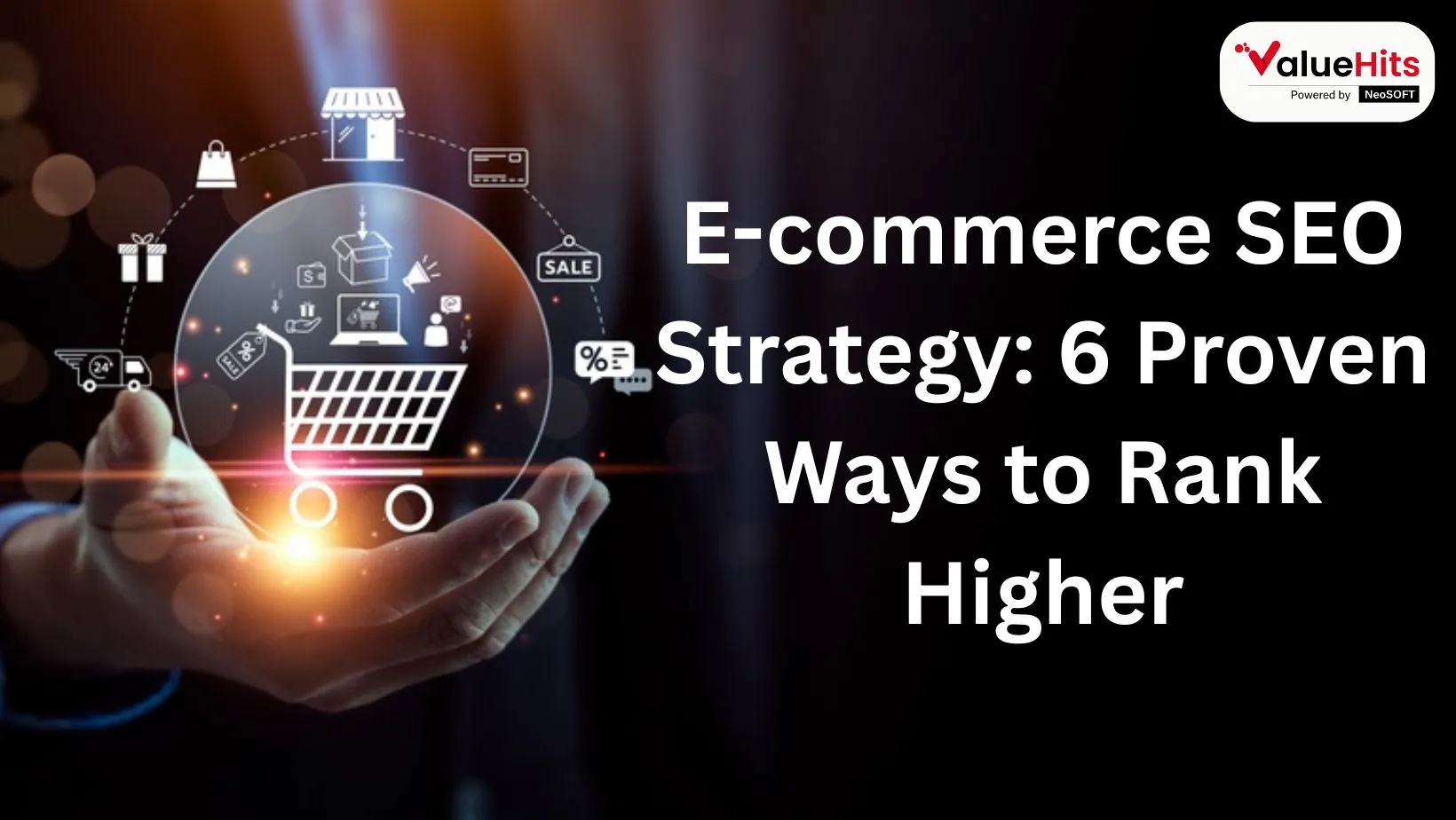E-commerce SEO Strategy: 6 Proven Ways to Rank Higher
The success of E-commerce businesses is not a matter of chance but a result of strategic visibility planning. Effective e-commerce SEO strategies, which we will explore in this document, empower you to ensure that potential buyers can find your products through search engine results. These six tested procedures are your tools to boost positions and attract natural website visitors to your store.

Keyword Research: The Foundation of SEO Strategy for E-commerce Website
Any successful e-commerce SEO strategy starts with keyword research, a process that puts you in control of your website's visibility. Your first step is to find the search terms your potential buyers would use to look for similar products.
-
Steps to Conduct Effective Keyword Research
You should use Google Keyword Planner, Ahrefs, and SEMrush to discover popular search terms.
Your target keywords should be long-tail terms that mirror user search purposes. Long-tail keywords are more specific and less competitive, making it easier for your ecommerce site to rank higher. For example, the phrase "best waterproof running shoes" would be a good example of a long-tail keyword that can attract potential buyers to your site.
Look at market competitors to spot empty areas in your chosen key phrases. For instance, if your competitors are not using a specific long-tail keyword that you've identified as relevant to your products, this could be an opportunity for you to fill that gap and attract more potential buyers to your site.
On-Page Optimization: Structuring Your Ecommerce Site for Success
-
Meta Titles and Descriptions
The content of each meta title and description on product and category pages must be distinctive with targeted search terms and information about the page subject matter.
-
URL Structure
The structure of your site URLs should stay straightforward because it benefits website visitors and search engines. Example: https://yourstore.com/products/waterproof-running-shoes
-
Product Descriptions
Your extensive product description should include e-commerce SEO keywords. The content should remain unique; bullet points serve users better than standard presentations.
-
Image Optimization
High-quality images need descriptive text through alt elements during optimization. These images help users and search algorithms rank better in Google Image Search while improving customers' browsing experiences.
Technical SEO: Ensuring a Smooth User Experience
A quick page loading speed and smooth site navigation are enabled by technical SEO implementation. Key areas include:
-
Visual pages should run efficiently. Image file sizes should be reduced and coded to a minimum to improve page loading times.
-
Check that your e-commerce site adapts perfectly to operate on every mobile device possible.
Enhance search results' visibility of products through structured data implementation known as schema markup. Schema Markup is a code that you can add to your website to help search engines provide more informative results for users. By implementing schema markup, you can make your product listings more attractive and visible in search results.
Building a Strong Backlink Profile
Your domain’s credibility rises when authoritative sources create backlinks, improving your search rankings. A successful approach for obtaining valuable backlinks consists of the following strategy:
-
Collaborate with bloggers along influencers to receive product reviews for your offerings.
-
Your brand should appear in both roundups and directories of your industry.
-
You should contact website owners to recover your brand mentions, which remain unlinked.
Optimizing for Mobile: A Must for Ecommerce Success
The significance of mobile optimization strengthens because over fifty percent of people shop online through mobile devices. Ensure your site is:
-
Responsive – Adapts to all screen sizes.
-
The total time needed to load pages needs to be less than three seconds.
-
Users can easily navigate the site because the menu and checkout steps are streamlined.
Conducting an E-commerce SEO Audit
Audit procedures enable your organization to detect strengths and weaknesses in the e-commerce SEO execution. Key factors to check:
-
The correct selection of keywords stands as an important factor to monitor.
-
Technical performance – Is your site fast and mobile-friendly?
-
Backing links should stem from trusted sites to maintain their quality.
Before concluding, it's essential to explore strategies that can help increase e-commerce lead generation and improve e-commerce conversion rates. By focusing on these aspects, businesses can ensure higher visibility, engagement, and ultimately, sales.
Final Thoughts
Implementing these strategies confidently across your platform and monitoring your results through Google Search Console and Ahrefs will lead to higher rankings and increased visitors who convert more often.
Your pursuit of expanding your online store continues. To maximize revenue during peak seasons, check out the guide "Boost Holiday Sales For E-Commerce."
Google AI Overview (Formerly Google SGE): How It Works & Why It Matters!
May 15, 2025
What is Google AI Overview?
It is a
15 Social Media Campaign Ideas Aligned with Digital Marketing Trends 2025
March 21, 2025
The digital marketing world evolves frequently; therefore, implementing
E-commerce SEO Strategy: 6 Proven Ways to Rank Higher
March 14, 2025
The success of E-commerce businesses is not a matter of chance but a re
